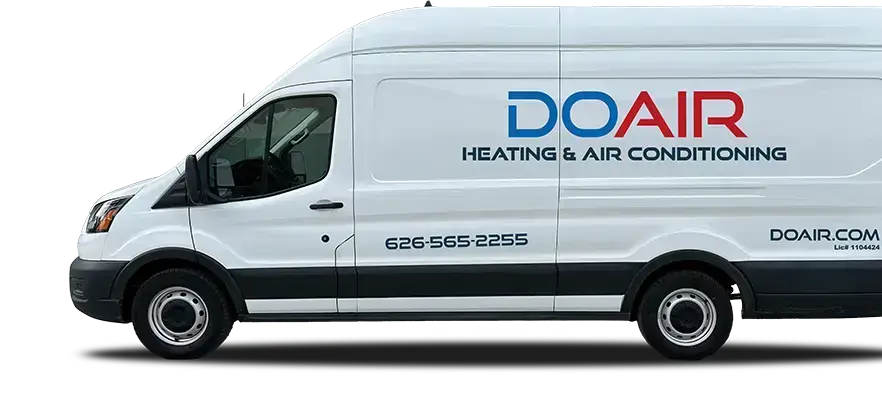LA Rental Housing (ADU) HVAC Option: Air conditioning selection hinges on rental scenarios, like full home, sublet, or ADU leases, plus who covers electricity costs. These influence the long-term expenses of maintaining HVAC systems. An in-depth look is essential for understanding these dynamics.
Categories of Air Conditioning and Heating
Air Conditioning Systems
By working principle: 1. Central air conditioning systems, split air conditioners, window air conditioners, portable air conditioners.2. Fixed-frequency air conditioners, variable-frequency air conditioners.
By energy type: Electrically driven air conditioners, solar air conditioners.
Heating Systems
By working principle: Central heating systems, underfloor heating systems, heat pump heating systems, etc.
By energy type: Natural gas heating, electric heating, solar heating, etc.
Packaging Method
Package HVAC Systems: All components are integrated into a single unit, usually installed outdoors or in a specific machine room, delivering cold or hot air through a duct system, suitable for commercial, industrial, and some residential applications.
Split Air Conditioning Systems: Consisting of an outdoor unit and an indoor unit, connected by refrigerant piping, offering installation flexibility and lower indoor noise, widely used in residential and commercial premises.
Types of Rental Housing
Whole House Rental: Tenants rent the entire house, including single-family homes, duplexes, townhouses, etc. This type is suitable for families or tenants wanting more private space.
Apartment and Community Rentals: One of the most common types of rentals in Los Angeles, ranging from luxury high-rises to economical buildings. Typically includes one-bedroom to multi-bedroom layouts, with some communities offering amenities like gyms and swimming pools.
Subletting: Tenants rent a specific room, sharing common areas like the kitchen and living room with other tenants. This type is more common among students and single professionals due to lower costs and the opportunity to meet new friends.
ADU Rentals: Accessory Dwelling Units (ADUs) are often built on the existing residential property, such as converted garages, attics, or newly built cottages in the backyard. ADUs offer a degree of privacy, suitable for small families or tenants needing separate space.
Co-living Apartments: A rising accommodation trend where tenants rent a room and share common areas like the living room and kitchen with other tenants. This type often includes furniture, suitable for short-term rentals or those looking for social opportunities.
Short-term Rentals and Vacation Homes: Short-term rentals through platforms like Airbnb are also common in Los Angeles, offering both whole house rentals and single rooms, suitable for vacationers or short stays.
Payment Methods for Rental Housing Energy Costs
Tenants Pay
The Tenants Direct payment of all energy costs: Tenants are responsible for all energy costs, including electricity, water, natural gas, garbage disposal, etc. In this arrangement, the energy account is usually registered in the tenant’s name, and payments are made directly to the service provider.
The Tenants Partial payment of costs: Tenants may only need to pay for certain energy costs, such as electricity and natural gas, while the landlord pays for water and garbage disposal. This distribution method will be specified in the contract.
Landlord Pays
The landlord includes all energy costs in the rent: In this case, the rent might be relatively higher, but tenants do not need to handle any energy bills separately. This is a good choice for tenants with strict budget control, as it simplifies the payment process and makes monthly expenses more predictable.
The landlord pays specific costs: Sometimes landlords bear some of the energy costs, such as water and garbage disposal, while the rest are paid by tenants. In this case, the contract will specify which costs are paid by the landlord and which are paid by tenants.
Choosing HVAC Equipment
In summary, choosing HVAC equipment for rental housing in Los Angeles needs to meet the following conditions to ensure it is both economical and eco-friendly while providing the best living experience:
Energy-efficient Equipment: Choosing equipment with high energy efficiency is crucial not only because they reduce environmental impact but also help lower long-term energy costs. For tenants, energy-efficient equipment means lower monthly expenses; for landlords, if they pay the energy bills, tenants might not be motivated to save energy.
High-quality Equipment: High quality refers not only to the durability and reliability of the equipment but also to user experience, noise level, and ease of maintenance. High-quality HVAC systems can reduce the rate of failures, lower maintenance costs, ensure tenant comfort and satisfaction, thereby helping to maintain and improve the competitive edge of rental properties.
Choosing Specific Equipment Based on Location and Space: Each type of rental housing has its unique needs and limitations. For example, whole house rentals might be suitable for central air conditioning or split systems, while single-room rentals or ADUs might be better suited for window or portable air conditioners. Choosing the right HVAC equipment for specific spaces can ensure efficient energy use and optimize the comfort of living spaces.
Conclusion
Choosing air conditioning and heating systems for rental housing in Los Angeles requires considering various factors, such as the type of rental (whole house, sublet, ADU, etc.), who pays the energy costs (tenant or landlord), and the type of equipment (central air conditioning, split systems, window air conditioners, portable air conditioners, etc.). Selecting energy-efficient, high-quality equipment is crucial for reducing environmental impact and long-term energy costs. Additionally, considering the specific needs and limitations of the rental property, choosing the most suitable HVAC system ensures the comfort and economy of the living experience.


